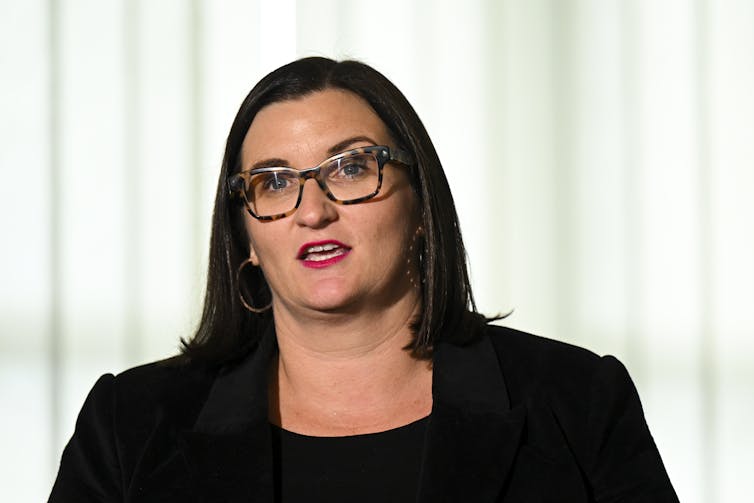Source: The Conversation (Au and NZ) – By Anthony Welch, Professor of Education, University of Sydney
Australia is facing an “unprecedented” teacher shortage. The federal government projects a shortfall of more than 4,000 high school teachers by 2025, but shortages are being felt across the board, especially in rural and remote schools, and in maths and science.
One of the possible solutions being touted by politicians is bringing in more teachers from overseas. This has happened before: in response to teacher shortages in Australia in the 1970s, teachers were brought in from the United Kingdom, United States and Canada.
Education Minister Jason Clare has asked Home Affairs Minister Clare O’Neil to fast-track visas for those with teaching qualifications. As he said earlier this month:
New South Wales Education Minister Sarah Mitchell has even proposed fast-tracking citizenship for teachers. But how realistic is this strategy when similar countries have their own teacher shortages?One of the things that we’ve got to do is prioritise visas for teachers from overseas who want to come and work here.
How does it work?
Teachers from New Zealand have automatic recognition of their qualifications. But those from other countries need to meet conditions imposed by state teacher registration boards, or similar bodies.
For urgent cases, employers can apply for limited registration, for individuals who do not (yet) meet such requirements. The Australian Institute for Teaching and School Leadership also provides skills assessment for overseas trained teachers, and it is also possible to do a bridging course.
Teachers want to quit in the UK
The signs from overseas, where COVID made pre-existing shortages worse, are not encouraging.
In England, a recent survey revealed 70% of teachers had considered resigning, with poor pay cited as a key factor by more than half of respondents. Another survey showed almost 50% of head teachers or principals planned to resign after the COVID pandemic, citing crushing workloads, poor pay and difficulties recruiting staff.
Lack of staff has already lead the UK to combine classes and it is now looking to recruit foreign teachers, including from Australia.
Extreme measures in the US
The US is following a similar trend: widespread teacher shortages compounded by the COVID pandemic. A pre-pandemic survey in 2018 estimated the shortage at 112,000, particularly in maths, science and special education.
A 2021 survey has since revealed 75% of school principals and districts were having trouble finding enough substitute staff to cover teacher absences.
Read more:
The most recent efforts to combat teacher shortages don’t address the real problems
States are having to resort to extreme measures to fill teaching positions during the pandemic. One school district in Texas asked parents to work as substitutes to fill the shortage. Some Texan schools have also moved to a four-day week.
Meanwhile, New Mexico has used National Guard members and state employees as volunteer substitute teachers to cover COVID shortages. Arizona now allows people without a college degree to begin teaching (as long as they’re enrolled in a degree).
Several states are already working with job agencies to find qualified foreign teachers.
Retired teachers back in Canadian classrooms
Canada is also suffering from a significant teacher shortage, especially in special needs, early childhood and at the upper secondary level.
High levels of teacher attrition (as much as 40% in the first five years of service in some provinces) is blamed.

Lukas Coch/AAP
The pool of substitute teachers has also shrunk. In Quebec, British Columbia and Ontario, school boards are contacting retired teachers and instructors without certification to fill gaps. Saskatchewan and Ontario are offering final year education students temporary permits as substitute teachers.
Manitoba has introduced a “condensed training program” of 30 hours, that promises to teach basic classroom skills to those with a limited teaching permit.
Canada is also searching internationally. Somewhat like the priority accorded to skilled workers in Australia’s migration scheme, Canada’s Federal Skilled Worker program allocates substantial points to those with foreign education credentials, including teachers.
Migration unlikely to work
So, if migration is seen as a solution to Australia’s teaching shortage, the question needs to be asked: where are they going to come from?
Although poor pay in the UK and some states in the US might make Australia seem attractive, current teacher shortages in England, the US and Canada make it unlikely that many will be found there.
While it is possible teachers can be found in other countries, such as India, Malaysia and Singapore, they are unlikely to be found in significant numbers, partly due to lengthy registration procedures and some discrimination when seeking employment.
A more likely scenario is of intensifying international competition for a shrinking pool of qualified teachers around the world.
![]()
Anthony Welch does not work for, consult, own shares in or receive funding from any company or organisation that would benefit from this article, and has disclosed no relevant affiliations beyond their academic appointment.
– ref. Teacher shortages are a global problem – ‘prioritising’ Australian visas won’t solve ours – https://theconversation.com/teacher-shortages-are-a-global-problem-prioritising-australian-visas-wont-solve-ours-189468








